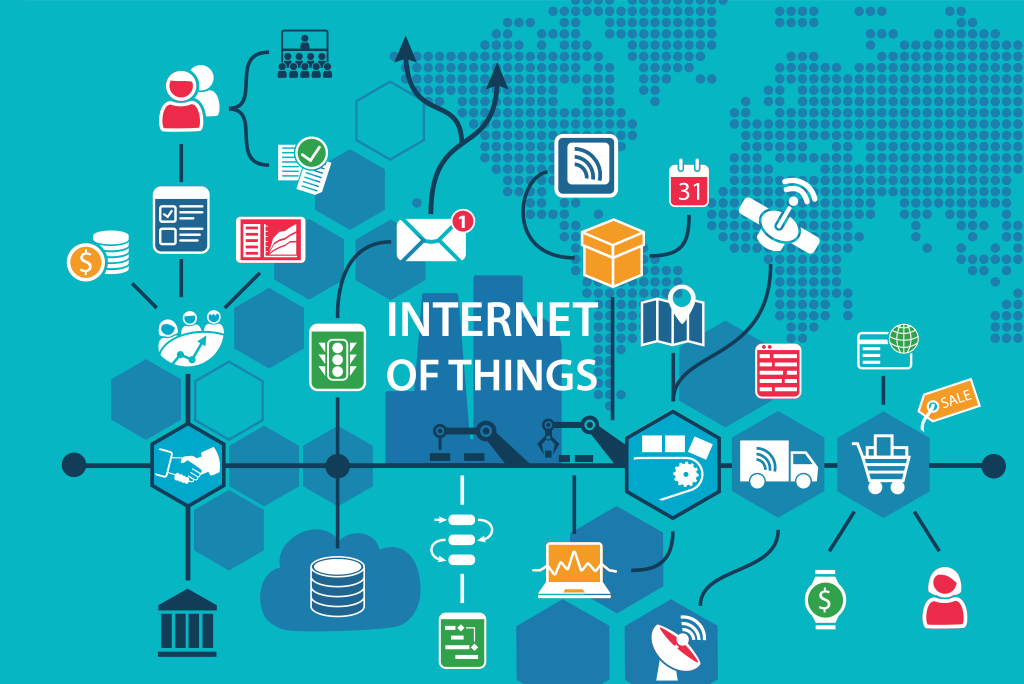Baeugi News Hub
Your source for the latest news and insightful articles.
IoT: The Invisible Network Connecting Your Daily Life
Discover how IoT weaves an unseen web into your daily life, transforming the ordinary into the extraordinary. Dive in now!
Understanding IoT: How the Invisible Network Transforms Everyday Life
Understanding the Internet of Things (IoT) is essential in today's technology-driven world. This invisible network connects devices, enabling them to collect and exchange data seamlessly. From smart thermostats that learn your heating preferences to wearable fitness trackers that monitor your health, IoT is transforming our everyday lives in profound ways. As these interconnected devices work together, they create a streamlined experience, allowing us to enhance our efficiency and make informed decisions based on real-time data.
Moreover, the impact of IoT extends beyond individual convenience. In industries such as agriculture, manufacturing, and healthcare, IoT technologies are revolutionizing operations. For example, farmers can use IoT sensors to monitor soil moisture levels, optimizing irrigation and conserving resources. Similarly, hospitals leverage connected devices to track patient vitals remotely, improving care and reducing costs. The invisible network of IoT is not just about smart living; it is also about creating sustainable solutions and enhancing productivity on a larger scale.

Top 5 Ways IoT Enhances Your Daily Activities
The Internet of Things (IoT) has revolutionized how we engage with our surroundings, transforming mundane tasks into effortless experiences. One of the top ways IoT enhances your daily activities is through smart home automation, where devices like thermostats, lights, and security systems are interconnected. This technology allows you to control your home environment remotely, ensuring optimal comfort and security with just a few taps on your smartphone. Imagine walking into a perfectly lit room, or having your heating system adjust automatically based on your schedule—all thanks to IoT!
Another significant benefit of IoT is its integration with wearable technology, such as fitness trackers and smartwatches. These devices continuously monitor your health metrics, helping you stay on top of your fitness goals. For example, they can provide real-time feedback on your heart rate and activity levels, allowing you to make informed decisions about your health. With IoT-enabled wearables, you can receive customized fitness plans and reminders, making it easier than ever to keep a healthy lifestyle. Thus, the enhancements brought by IoT into daily routines are not just convenient; they can lead to substantial improvements in overall well-being.
Is Your Home Smart? The Role of IoT in Modern Living
As technology continues to advance, the concept of a smart home is becoming increasingly prevalent, thanks to the Internet of Things (IoT). This network of interconnected devices enables homeowners to control and monitor their living environments with unprecedented ease and efficiency. From smart thermostats that learn your heating preferences to intelligent security systems that can be accessed from your smartphone, the capabilities of IoT in modern living are transforming the way we interact with our homes. These devices not only enhance convenience and comfort but also contribute to energy efficiency and security, making them essential for the modern homeowner.
However, embracing smart technology often raises questions about privacy and data security. With so many devices collecting personal information, it is crucial for homeowners to understand how to protect themselves. Implementing basic security measures, such as updating passwords and regularly checking device settings, can go a long way in ensuring a secure smart home environment. As you explore the options available, consider how the IoT can improve your quality of life while still keeping your data safe. The journey towards a fully integrated smart home is not just about convenience; it's about creating a space that truly reflects your lifestyle and needs.